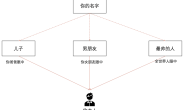深入了解ROS细节之消息发布器和订阅器、mavros消息发布器和订阅器
编写简单的消息发布器和订阅器 (C++)
编写发布器节点
1.『节点』(Node) 是指 ROS 网络中可执行文件。接下来,我们将会创建一个发布器节点(“talker”),它将不断的在 ROS 网络中广播消息、切换到之前创建的 beginner_tutorials package 路径下:
cd ~/catkin_ws/src/beginner_tutorials
2.在 beginner_tutorials package 路径下创建一个src文件夹:
mkdir -p ~/catkin_ws/src/beginner_tutorials/src
3.这个文件夹将会用来放置 beginner_tutorials package 的所有源代码,在 beginner_tutorials package 里创建 src/talker.cpp 文件,并将如下代码粘贴到文件内:(实际粘贴时请去掉每一行前面的行号)
#include "ros/ros.h" ##ros/ros.h 是一个实用的头文件,它引用了 ROS 系统中大部分常用的头文件
28 #include "std_msgs/String.h" #这引用了 std_msgs/String 消息, 它存放在 std_msgs package 里,是由 String.msg 文件自动生成的头文件
29
30 #include <sstream>
31
32 /**
33 * This tutorial demonstrates simple sending of messages over the ROS system.
34 */
35 int main(int argc, char **argv)
36 {
37 /**
38 * The ros::init() function needs to see argc and argv so that it can perform
39 * any ROS arguments and name remapping that were provided at the command line. For programmatic
40 * remappings you can use a different version of init() which takes remappings
41 * directly, but for most command-line programs, passing argc and argv is the easiest
42 * way to do it. The third argument to init() is the name of the node.
43 *
44 * You must call one of the versions of ros::init() before using any other
45 * part of the ROS system.
46 */
47 ros::init(argc, argv, "talker");#初始化 ROS 。它允许 ROS 通过命令行进行名称重映射
48
49 /**
50 * NodeHandle is the main access point to communications with the ROS system.
51 * The first NodeHandle constructed will fully initialize this node, and the last
52 * NodeHandle destructed will close down the node.
53 */
54 ros::NodeHandle n;#为这个进程的节点创建一个句柄。第一个创建的 NodeHandle 会为节点进行初始化,最后一个销毁的 NodeHandle 则会释放该节点所占用的所有资源
55
56 /**
57 * The advertise() function is how you tell ROS that you want to
58 * publish on a given topic name. This invokes a call to the ROS
59 * master node, which keeps a registry of who is publishing and who
60 * is subscribing. After this advertise() call is made, the master
61 * node will notify anyone who is trying to subscribe to this topic name,
62 * and they will in turn negotiate a peer-to-peer connection with this
63 * node. advertise() returns a Publisher object which allows you to
64 * publish messages on that topic through a call to publish(). Once
65 * all copies of the returned Publisher object are destroyed, the topic
66 * will be automatically unadvertised.
67 *
68 * The second parameter to advertise() is the size of the message queue
69 * used for publishing messages. If messages are published more quickly
70 * than we can send them, the number here specifies how many messages to
71 * buffer up before throwing some away.
72 */
#告诉 master 我们将要在 chatter(话题名) 上发布 std_msgs/String 消息类型的消息。这样 master 就会告诉所有订阅了 chatter 话题的节点,将要有数据发布。第二个参数是发布序列的大小。如果我们发布的消息的频率太高,缓冲区中的消息在大于 1000 个的时候就会开始丢弃先前发布的消息
## NodeHandle::advertise() 返回一个 ros::Publisher 对象,它有两个作用: 1) 它有一个 publish() 成员函数可以让你在topic上发布消息; 2) 如果消息类型不对,它会拒绝发布
73 ros::Publisher chatter_pub = n.advertise<std_msgs::String>("chatter", 1000);
74 ## ros::Rate 对象可以允许你指定自循环的频率。它会追踪记录自上一次调用 Rate::sleep() 后时间的流逝,并休眠直到一个频率周期的时间
75 ros::Rate loop_rate(10);### 在这个例子中,我们让它以 10Hz 的频率运行
76
77 /**
78 * A count of how many messages we have sent. This is used to create
79 * a unique string for each message.
80 */
81 int count = 0;
82 while (ros::ok())
83 {
84 /**
85 * This is a message object. You stuff it with data, and then publish it.
86 */
87 std_msgs::String msg;
88
89 std::stringstream ss;
90 ss << "hello world " << count;
91 msg.data = ss.str();
92 ## ROS_INFO 和其他类似的函数可以用来代替 printf/cout 等函数
93 ROS_INFO("%s", msg.data.c_str());
94
95 /**
96 * The publish() function is how you send messages. The parameter
97 * is the message object. The type of this object must agree with the type
98 * given as a template parameter to the advertise<>() call, as was done
99 * in the constructor above.
100 */
## 这里,我们向所有订阅 chatter 话题的节点发送消息
101 chatter_pub.publish(msg);
102 ## 在这个例子中并不是一定要调用 ros::spinOnce(),因为我们不接受回调。然而,如果你的程序里包含其他回调函数,最好在这里加上 ros::spinOnce()这一语句,否则你的回调函数就永远也不会被调用了
103 ros::spinOnce();
104 ## 这条语句是调用 ros::Rate 对象来休眠一段时间以使得发布频率为 10Hz
105 loop_rate.sleep();
106 ++count;
107 }
108
109
110 return 0;
111 }
4.具体的代码解析和编写订阅器的相关知识请参考官网
手动创建ROS程序包
1.创建ROS程序包命令参考之前创建相关文件 2.ROS packages有时会需要操作系统提供一些外部函数库,这些函数库就是所谓的“系统依赖项”。在一些情况下,这些依赖项并没有被系统默认安装,因此,ROS提供了一个工具rosdep来下载并安装所需系统依赖项 3.rosdep 是一个能够下载并安装ROS packages所需要的系统依赖项的小工具 使用方法:
rosdep install [package]
4.如果报错没有安装此命令,使用sudo rosdep init、rosdep update来安装rosdep工具。
mavros消息发布器和订阅器
这里主要介绍编写ROS程序包对无人机offobard模式下控制,控制无人机的程序包的依赖关系如下:
#include <ros/ros.h>
#include <geometry_msgs/PoseStamped.h>
#include <mavros_msgs/CommandBool.h>
#include <mavros_msgs/SetMode.h>
#include <mavros_msgs/State.h>
这里主要讲一下启动mavros节点后开启的相关发布器和订阅器,以供我们在编程时使用
 offboard_node.cpp的源码中有上图的部分,其中实例化了多个与mavros相关的发布器和订阅器,后续的编程中使用这些发布器和订阅器对mavros节点进行控制,然后通过mavros节点对无人机进行控制,这里使用了C++编程中叫做类模板的概念,对类模板实例化建立发布器和订阅器对象,也可以实例化出客户端和服务器对象 要想了解更多的与mavros相关的有哪些发布器、订阅器、客户端、服务器可以使用,请参考这里
offboard_node.cpp的源码中有上图的部分,其中实例化了多个与mavros相关的发布器和订阅器,后续的编程中使用这些发布器和订阅器对mavros节点进行控制,然后通过mavros节点对无人机进行控制,这里使用了C++编程中叫做类模板的概念,对类模板实例化建立发布器和订阅器对象,也可以实例化出客户端和服务器对象 要想了解更多的与mavros相关的有哪些发布器、订阅器、客户端、服务器可以使用,请参考这里




